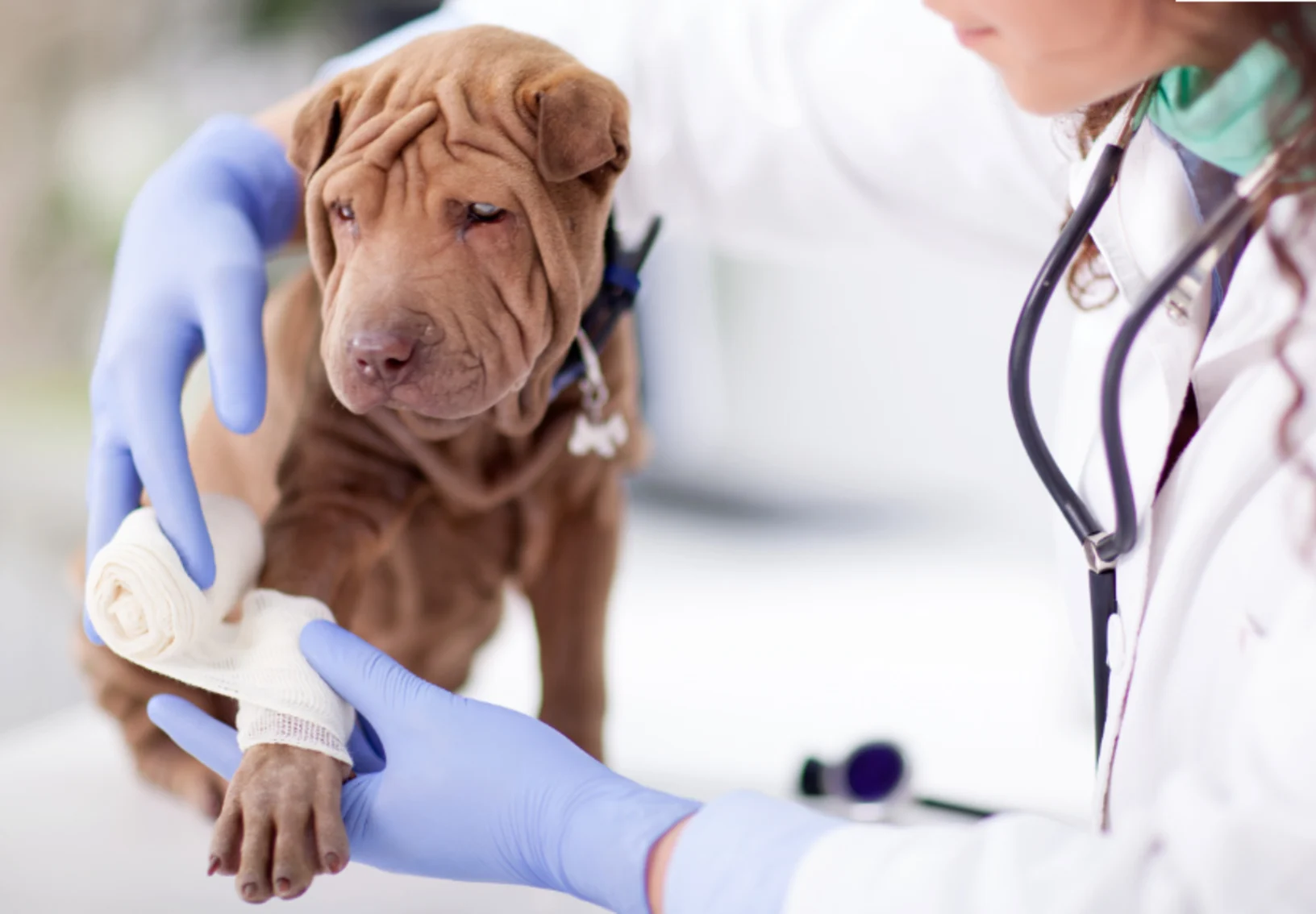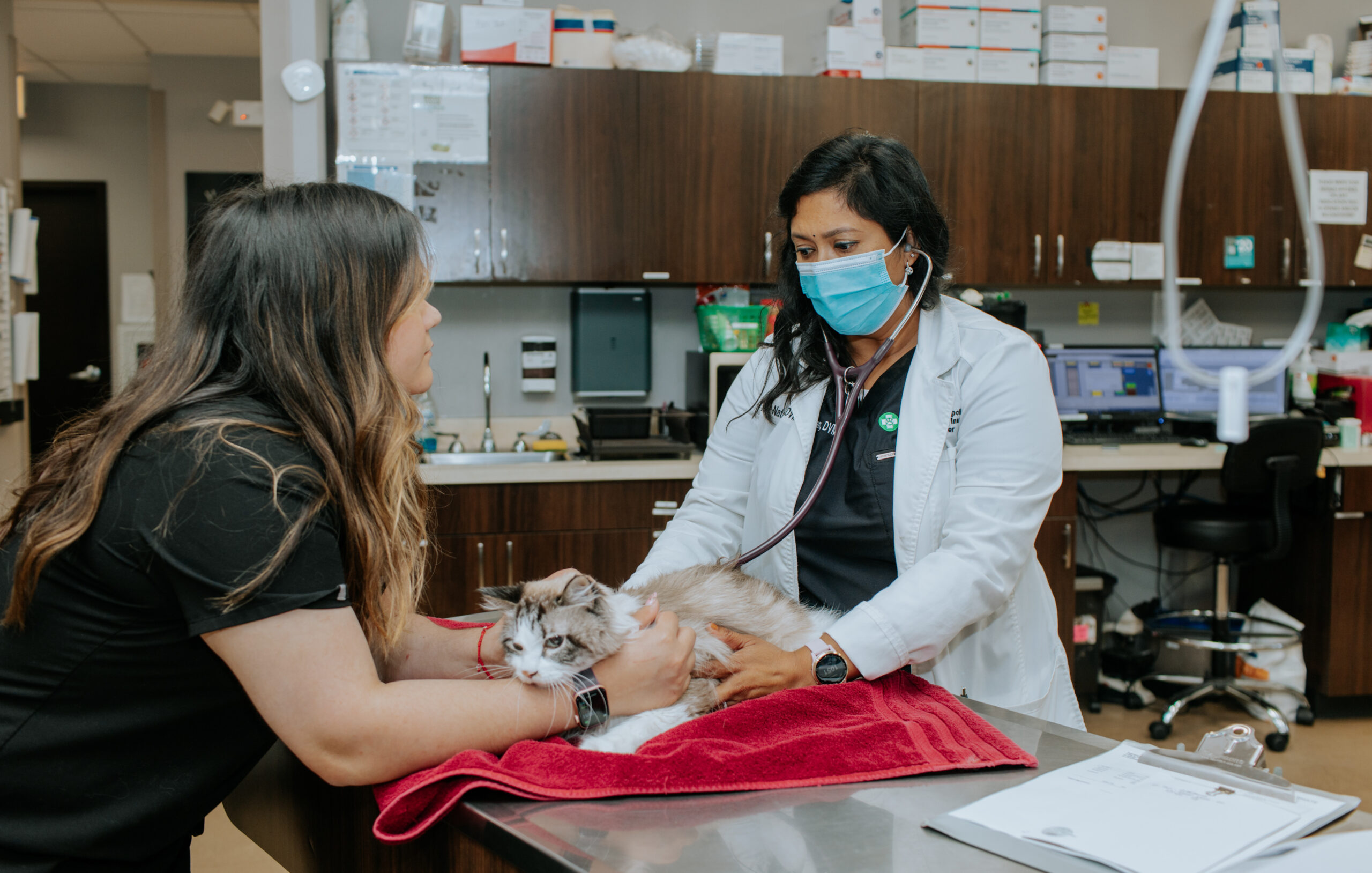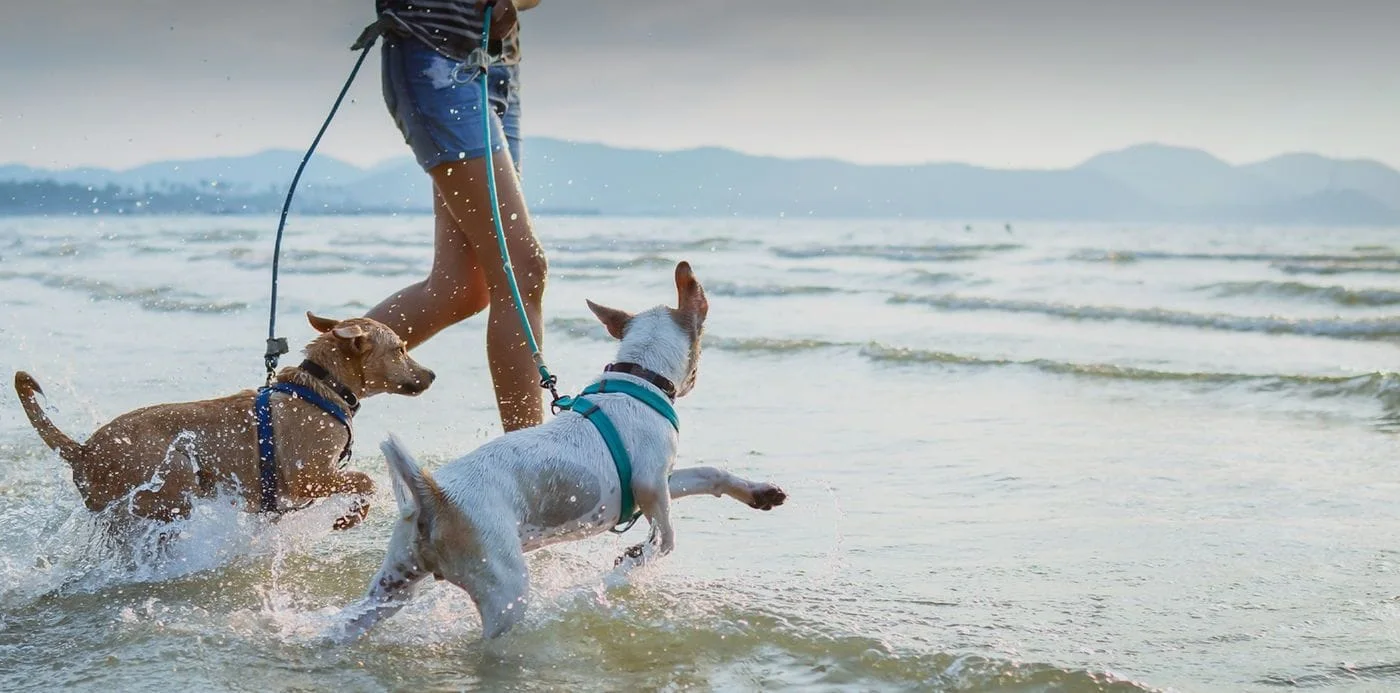Why Having a Trusted emergency vet Matters for Every Responsible Pet Owner
Wiki Article
Why Pet Rehabilitation Is Crucial: the Perks of Veterinarian Solutions for Your Family pet's Recuperation
Animal recovery is a crucial part of recuperation for pets encountering injuries or impairments. Veterinary solutions give crucial assistance via customized rehabilitation strategies that deal with specific demands. These strategies often consist of pain monitoring, physical therapy, and dietary support. Recognizing the various elements of animal rehabilitation can illuminate its importance in enhancing recuperation outcomes. What certain benefits do these solutions supply, and just how can they change a pet dog's recovery journey?Understanding Animal Rehab
Pet recovery encompasses a series of restorative techniques focused on bring back the health and wellness and functionality of injured or disabled animals. This area integrates numerous techniques, including physical therapy, hydrotherapy, and work therapy, tailored to satisfy the particular needs of each pet. Rehab specialists examine a pet's condition, establishing personalized treatment plans that might involve workouts to strengthen muscles, improve flexibility, and improve overall health. The procedure not just concentrates on physical recovery yet additionally addresses psychological and behavior facets. Animals typically experience stress and anxiety and anxiety following an injury, making psychological wellness factors to consider necessary in rehabilitation. By creating a helpful setting, specialists can aid animals regain their self-confidence and adapt to their brand-new conditions. With normal sessions, animals can experience significant improvements, inevitably bring about a better lifestyle. On the whole, understanding pet rehab highlights its value in advertising recovery and boosting the bond between pets and their proprietors.
The Function of Pain Management in Recovery
Just how important is reliable pain management in the recovery of injured pets? It plays an important duty in assisting in recovery and improving the general health of pets. Proper pain monitoring not only eases discomfort but also advertises mobility, enabling animals to get involved in recovery tasks required for recuperation. When pain is properly managed, animals have a tendency to respond positively to treatment, causing quicker recovery outcomes.Veterinarians make use of different approaches to analyze and resolve discomfort, consisting of medicines, acupuncture, and alternate therapies. By customizing pain management techniques to the private needs of each animal, vets can ensure that pets continue to be tranquil and cooperative throughout their recovery trip. In addition, decreasing pain aids minimize stress, which can inhibit recovery and prolong healing times. To summarize, effective pain administration is essential for boosting the recovery procedure and improving the lifestyle for hurt animals.Physical Treatment Strategies for Animals
Countless physical treatment methods are offered to help in the recovery of pet dogs recuperating from injuries or surgical procedures (emergency vet). These methods can improve mobility, soothe pain, and advertise recovery. Therapeutic exercises, for example, aid enhance muscular tissues and enhance joint feature, allowing pets to reclaim their physical capabilities gradually. Hands-on therapy, that includes massage and mobilization, can alleviate tension and improve blood circulation, contributing to a much faster recovery.Other techniques such as easy range of movement exercises encourage joint versatility and minimize tightness. In addition, electrical excitement therapy might be employed to promote nerves and muscular tissues, promoting healing and pain relief.Veterinary professionals frequently tailor these strategies to every pet's details requirements, guaranteeing a complete rehab strategy. By implementing these physical therapy techniques, pet dogs can experience better top quality of life and an extra successful recovery from their disorders. The combination of these methods into rehabilitation programs is necessary for suitable recuperation end resultsBenefits of Hydrotherapy for Rehab
Hydrotherapy offers considerable benefits in animal recovery, particularly in boosting flexibility. This water-based therapy advertises discomfort alleviation while offering convenience to harmed or recuperating family pets. Additionally, it helps with strength-building workouts that add to total physical healing.Improved Movement Renovation
As pets recover from injuries or surgical treatments, enhanced wheelchair typically becomes a key objective of their recovery. Hydrotherapy serves as an important tool in accomplishing this purpose. Via water-based exercises, animals can engage in low-impact movements that assist in joint mobility and enhance muscles without the anxiety of weight-bearing activities. The buoyancy of water sustains their bodies, enabling for raised variety of activity and mobility renovation. In addition, hydrotherapy urges far better balance and coordination, which are important for bring back typical activity patterns. Routine sessions can bring about substantial progress in an animal's physical abilities, ultimately enhancing their quality of life. This approach not only help in healing but likewise promotes a much more energetic and meeting way of life post-rehabilitation.Discomfort Alleviation and Comfort

Relief from discomfort is an essential facet of pet rehabilitation, and hydrotherapy greatly contributes to this procedure. By making use of water's buoyancy, hydrotherapy decreases joint tension and alleviates pain during movement. This therapeutic strategy gives a soothing setting where pet dogs can engage in gentle exercises without the full weight of their bodies affecting their healing. The cozy water promotes blood flow, promoting recovery while likewise encouraging leisure. In addition, hydrotherapy sessions can be customized to satisfy the details demands of the animal, ensuring perfect comfort. As pets experience minimized pain and increased comfort levels, their overall willingness to take part in rehab activities typically boosts, resulting in an extra efficient healing trip. Hydrotherapy offers as a critical tool in improving discomfort alleviation and comfort during rehabilitation.
Stamina Structure Workouts
Strength-building exercises play an important duty in the recovery procedure, with hydrotherapy offering special advantages. This form of treatment makes use of water resistance to boost muscle mass strength without putting extreme stress on the joints. The buoyancy of water supports the pet dog's weight, enabling safer movement and enhanced variety of activity. Furthermore, hydrotherapy can improve cardio health and wellness and promote overall fitness, assisting in much faster recovery from injuries or surgeries. The regulated environment additionally reduces the risk of reinjury, making it a suitable choice for animals calling for recovery. Routine hydrotherapy sessions can bring about visible enhancements in movement, stamina, and endurance, eventually boosting the pet's quality of life and ability to go back to typical tasks.Significance of Personalized Rehabilitation Strategies
Custom-made rehabilitation strategies are crucial for resolving the distinct demands of each pet, ensuring individualized therapy strategies. These strategies enable effective progress monitoring and needed changes, promoting suitable recovery end results. Additionally, an alternative method can improve the general health of the pet, promoting a more complete rehabilitation experience.Individualized Therapy Approaches
While numerous rehab programs embrace a one-size-fits-all technique, the one-of-a-kind demands of each pet necessitate personalized therapy plans for perfect recovery. Custom-made rehabilitation plans take into account different aspects, including the animal's species, age, medical background, and certain injuries or conditions. By tailoring interventions, veterinarians can address each animal's special difficulties, making the most of the performance of the rehabilitation process. Individualized plans may integrate various techniques such as physical therapy, hydrotherapy, and restorative exercises, guaranteeing that the treatment straightens with the pet's capabilities and progress. In addition, individualized methods cultivate a more powerful bond in between the animal and the caregiver, promoting a much more engaging and supportive recovery setting. Inevitably, individualized treatment is vital for accomplishing finest possible end results in animal recovery.Progress Monitoring and Adjustments

Holistic Recuperation Strategies
Alternative recovery methods are vital for efficient pet rehabilitation, as they emphasize the importance of individualized therapy strategies tailored per animal's specific demands. This technique takes into consideration the physical, psychological, and environmental elements impacting healing. Custom-made rehab plans may consist of a mix of physical treatment, nutritional therapy, and behavioral alterations. By attending to these diverse elements, veterinarians can enhance the overall health of the pet and promote a faster recuperation. Moreover, such tailored techniques help with a deeper understanding of the pet's unique challenges, bring about a lot more reliable interventions. Inevitably, more info alternative healing methods not just enhance physical wellness but also add to the animal's psychological and psychological security, making certain a complete rehab experience.The Impact of Nutrition on Healing
Nutrition plays an important function in the healing process for fixing up pets, commonly determining the rate and efficiency of recovery. A healthy diet plan offers the essential nutrients that sustain tissue repair work, boost the immune system, and enhance total vitality. Healthy protein is particularly essential, as it assists in muscle mass rebuilding and recuperation from injuries. Necessary fats, vitamins, and minerals additionally add to decreasing inflammation and promoting optimum mobile function.Veterinarians regularly stress the value of tailored nutrition strategies, considering each pet's details demands, age, and health condition. Proper hydration is just as important, as fluids promote nutrition absorption and help in detoxification. By guaranteeing that family pets get appropriate nourishment, caregivers can significantly boost their chances of an effective healing, leading to far better lasting health end results. Ultimately, nutrition works as a fundamental aspect in the rehabilitation trip, sustaining pets in reclaiming strength and strength post-injury or illness.Success Stories: Family Pets That Grew After Rehab
Effective recovery stories abound, showcasing the durability of pet dogs who have actually conquered significant obstacles. Take, for example, Bella, a golden retriever that suffered severe injuries from an automobile accident. With dedicated vet treatment and a thorough recovery program, she regained her wheelchair and returned to her playful self, much to her owner's joy. In a similar way, Max, a senior feline diagnosed with joint inflammation, experienced exceptional renovation via a mix of physical treatment and discomfort management. His newly found dexterity permitted him to appreciate his favored sunbathing places again. An additional motivating situation is that of Coco, a rescued greyhound who conquered stress and anxiety through habits modification and socializing strategies, allowing her to thrive in her brand-new home. These success tales exhibit the transformative power of pet recovery, emphasizing that with the right assistance, pet dogs can not only recuperate however lead meeting lives, improving the bonds they share with their households.Frequently Asked Questions
For how long Does the Recovery Process Commonly Consider Animals?
The rehabilitation procedure for family pets generally varies based upon the injury or condition, varying from a couple of weeks to several months. Specific development, therapy type, and commitment to workouts substantially affect the general duration of recuperation.Exist Any Kind Of Risks Connected With Pet Rehab?
Animal rehab may carry threats such as worsening of injuries, inappropriate techniques bring about discomfort, or insufficient tracking during healing. These factors can prevent progression and affect the general effectiveness of the rehab process.
Can All Pets Benefit From Rehab Solutions?
Not all animals may call for recovery, however lots of can benefit greatly. Recovery solutions can improve mobility, relieve pain, and boost general well-being, particularly for those recouping from injuries, surgical treatments, or persistent conditions.Exactly How Can I Prepare My Pet for Recovery Sessions?

What Indicators Suggest My Pet Requirements Recovery?
Indications showing a family pet might require recovery include problem walking, hopping, decreased task levels, hesitation to leap, or signs of discomfort. Observing these habits can prompt proprietors to look for specialist evaluation and treatment for their pets.Report this wiki page